Are you a contractor?
Join our network and attract real clients!
Table of Contents
10 min read
How to Protect Yourself from Crystalline Silica While Working Construction
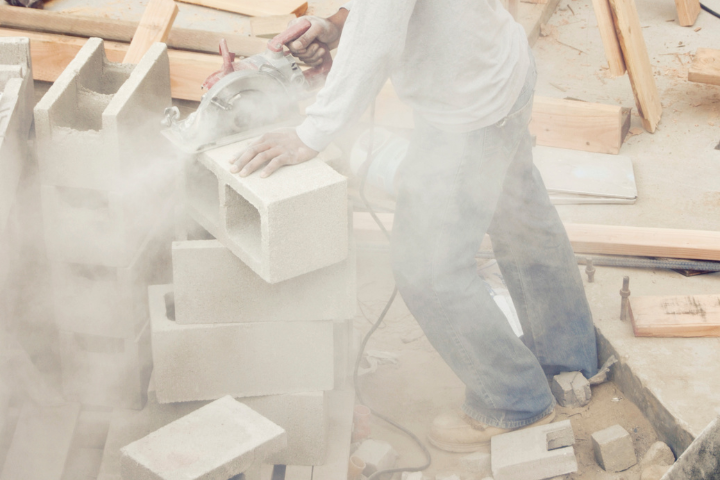

10 min read
How to Protect Yourself from Crystalline Silica While Working Construction
Advice for contractorHow to Protect Yourself from Crystalline Silica While Working Construction
Exposure to crystalline silica is so dangerous that the CNESST has decided to instill a “zero tolerance” policy against contractors. In light of the hazardous aspect of this mineral, the administration is far from exaggerating regarding actions taken.
Indeed, under that appealing appellation lies a grouping of hazardous minerals, characterized by a silica and oxygen composition.
Here’s everything you need to know to better grasp the underlying danger of exposure and implement control measures to safeguard your employees’ well-being.
Risks Associated with Crystalline Silica in Professional Settings
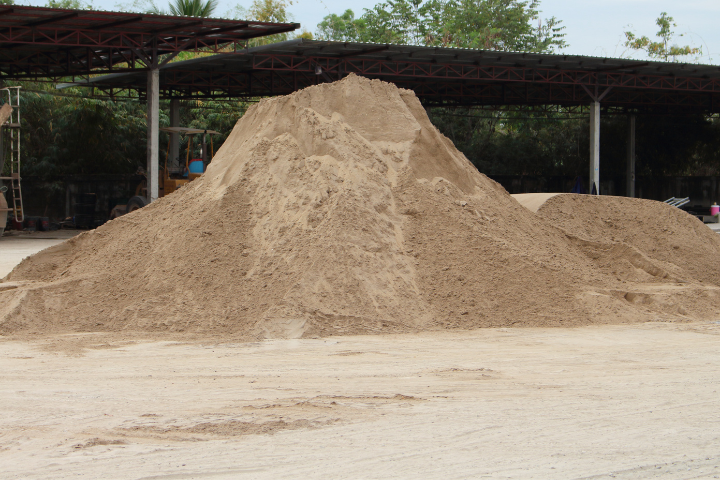
Where is crystalline silica found?
In the construction industry, said mineral is found in the following fields:
Masonry
Stone cutting and polishing
Sanding
Ceramics
Tunnelling
But also as a product or material component:
Abrasive agents
Shrinkage agents
Glass
Enamel
Ceramics
Oil purification and discoloration products
Asphalt
Roof coatings
Paints
Plasters
Industrial absorbents
And more
In other words, it’s found in bits and pieces, scattered even where it’s unlikely, in extremely inconsistent amounts:
Material | Amount of Crystalline Silica |
Brick | Over 30% |
Concrete, cement mortar | 25% to 70% (varies based on soil composition) |
Plastic composites | Up to 80% |
Tiles | 30% to 45% |
Sand, gravel, silex | Over 70% |
Sandstone, quartzite | Over 70% |
Shale | 40% to 60% |
Clay subsoil | Up to 40% |
Newly developed composite materials | Over 90% |
In the next section, we'll delve deeper into the matter to help shed more light on task-specific jobs that involve a level of exposure.
The Construction Sector Is Especially Affected
Labourers working in the construction industry are unfortunately among the group of workers who are most at risk, most notably:
Mine drillers
Underground workers
Roofers (concrete slab roofs)
Cement finishers
Before further delving into the details regarding construction-related lines of work in which crystalline silica exposure is likely, we first need to link the job type with associated exposure risks. To do so, we first have to establish crystalline silica’s OEL, meaning its occupational exposure limit.
In Quebec, the OEL for crystalline silica was lowered in August 2020 (Act regarding Occupational Health and Safety in Quebec) to 0.05 mg/m³, which correlates to those established by the United States and Australia. This new limit, replacing the former limit of 0.1 mg/m³ set in our province, will come into effect on April 28, 2024.
According to the UK agency HSE (Health and Safety Executive), going from 0.1 mg/m³ to 0.05 mg/m³ OEL prevents 300 workplace-related casualties.
Now, let’s take a closer look at the exposure rate of certain construction jobs:
Type of Work | Crystalline Silica Exposure Level (8-Hour Period) |
Bushhammering | 0.73 mg/m³ |
Masonry demolition | 0.59 mg/m³ |
Tunnel construction | 0.27 mg/m³ |
Other types of drilling | 0.24mg/m³ |
Underground work | 0.22 mg/m³ |
Abrasive blasting | 0.19 mg/m³ |
Roofing (concrete slab) | 0.15 mg/m³ |
Cement application | 0.13 mg/m³ |
The table above showcases that without proper protective gear, exposure limits to crystalline silica dust aren't only attained rapidly, but also exceeded by far.
Health Hazards: What Are the Risks of Crystalline Silica Exposure?
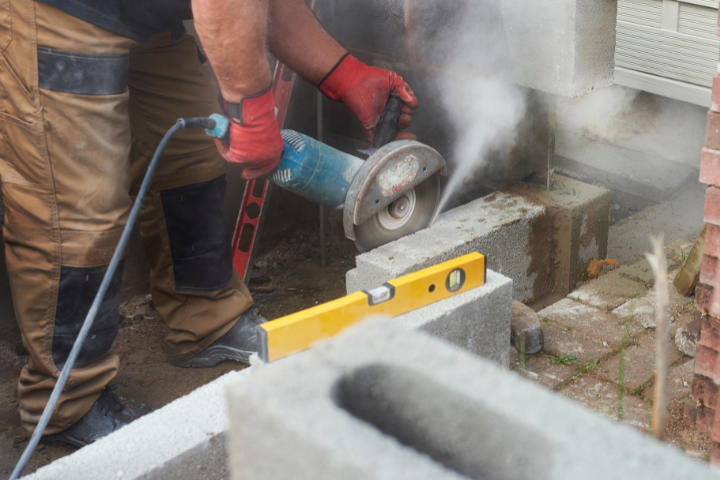
Also known as silicon dioxide (SiO2), crystalline silica is to blame for severe respiratory diseases, which are incurable at times, if not fatal, such as:
Lung cancer
Silicosis
Effects of Inhaling Crystalline Silica Dust
Although we’ll cover it at the end of this article, in the section dedicated to amorphous silica, but let’s just preface it by saying that crystalline silica has one unique particularity: accumulation. When inhaled, it accumulates in the lung tissue, creating shortness of breath and chronic inflammation. Here’s a range of possible effects:
Silicosis
Cancers
Tuberculosis
Auto-immune diseases (arthritis, scleroderma, systemic lupus erythematosus)
Chronic obstructive pulmonary disease (COPD)
Kidney diseases
Without stating a specific pathology, studies have determined that workers exposed to silica at a rate of 0.09 mg/m³ over a 24-hour period experience a loss of respiratory capacity equivalent to half that of an individual smoking a pack of cigarettes a day for 30 years. As for the new exposure limit (0.05 mg/m³), a minimal, yet chronic, loss is noted.
To narrow down the scope of pathologies scrutinized during the course of the numerous studies, we’ll now take a closer look at silicosis, lung cancers, and tuberculosis, which are all directly linked or aggravated by crystalline silica particles.
Silicosis Is a Common Occupational Disease
Between 2004 and 2008, the CNESST (formerly CSST) recognized 157 cases of silicosis. Since then, between 2006 and 2017, industry professionals have thoroughly evaluated the risks, and only 360 cases of silicosis have been registered in the province via the MADO (notifiable diseases) procedure. It might be harder to see the bigger picture when focusing on the aforementioned numbers, since in Quebec, about 80,000 workers are exposed to silica.
However, bear in mind that the risk of contracting this disease is nearly impossible if the established prevention methods are implemented.
How prevalent is silicosis in the construction industry?
It’s important to highlight that the construction industry appears to be quite mindful of their workers’ health since a lower incidence of silicosis has been recorded for industry-specific labourers compared to the following:
Mine and quarry workers, well drillers, and other related professions
Manufacturing plant employees
Fabrication, framing, and repair specialists
Manufacturing or fabrication machine operators
Vehicle dent repair and bodywork workers
A Higher Likelihood of Lung Cancer
Since June 1997, crystalline silica is classified as a human carcinogen. While the pathway between the silica particles and the onset of cancer isn’t yet entirely clear, numerous studies have enabled a scientific consensus between silica exposure leading to silicosis, progressing into a form of lung cancer. However, it doesn’t represent a progression for individuals suffering from silicosis, but rather a higher risk due to their disease.
Individuals can receive compensation in the event of a workplace-related disease. Regarding this matter, the legal precedent in Quebec states that a plasterer was compensated after having been exposed to silica for nine years, despite it never developing into silicosis.
Even the new standard of 0.05 mg/m³ doesn’t protect workers from silica. After having been exposed to this level of silica for 45 years, the chances of it progressing into lung cancer are still estimated to be 27/1,000. Once again, silica exposure can only be controlled with the use of effective prevention measures.
The Current Regulation Regarding Crystalline Silica
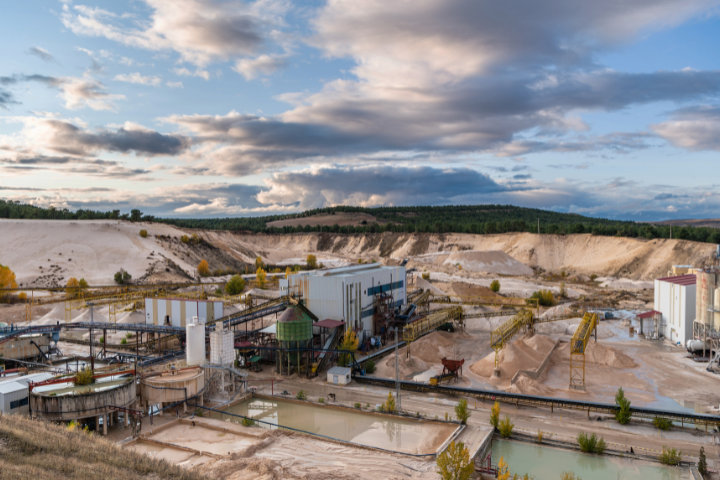
CNESST’s Risk Prevention Measures
The CNESST is the governing organization responsible for implementing prevention measures related to the risks associated with inhaling crystalline silica particles, as well as just any other toxic products. Meaning it ensures their rules and regulations are upheld in matters related to workplace health and safety.
Said organization remains up-to-date regarding legislative developments and the progression of scientific knowledge in all areas related to occupational health. It’s actually due to documents produced by the CNESST that the aforementioned plasterer was awarded compensation for their lung cancer on account of prolonged exposure to crystalline silica particles.
To prevent such occurrences, the CNESST published a datasheet (in French only) gathering all the essential information regarding silica. It compiles a list of all articles related the workplace and worker safety.
Given the CNESST’s informative role, it also has the authority the halt or discontinue any worksite failing to respect the laws and regulations established for occupational safety in matters related to silica particle exposure.
Company heads or any personnel responsible for employee safety can be subjected to legal sanctions.
New Employer Obligations for 2024
As we already mentioned, as of April 28, 2024, the exposure limit to crystalline silica dust is set to be lowered from 0.1 mg/m³ to 0.05 mg/m³.
This new legislation won’t change the fundamental risk prevention measures contractors must implement on construction worksites.
The three main elements responsible parties must focus on are as follows:
Measuring the calibration process of crystalline silica dust devices
Providing specially designed protective respiratory gear
Reinforcing control measures for crystalline silica dust particle emissions
Now then, let’s take a closer look at how all these measures will be implemented on construction worksites.
How to Protect Yourself Against Crystalline Silica Exposure
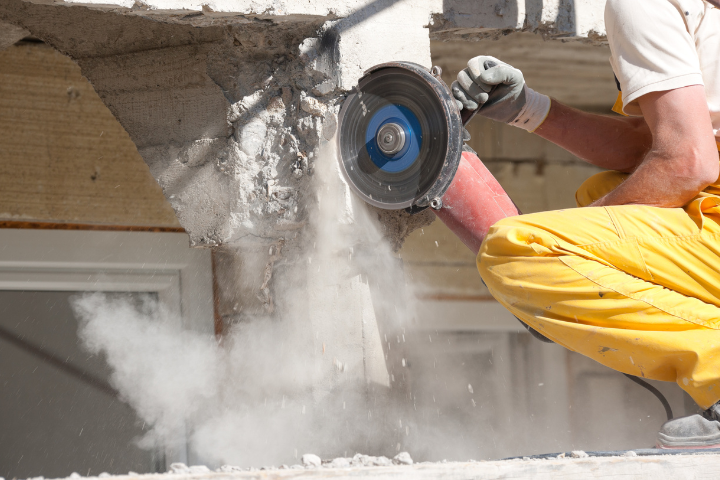
Control Measures Set by Employers
To protect their staff, employers must abide by the following sections:
Section 51 regarding occupational health and safety
Section 2.10.8 of the Safety Code for the construction industry
Section 42 of the Safety Code for the construction industry
Sub-section 3.20 of the Safety Code for the construction industry (regarding abrasive blasting)
In a nutshell, these provisions relating to effective safety measures must be implemented to prevent propagating silica particles by:
Training employees to wear their protective respiratory gear
Selecting appropriate respiratory protection
Measuring silica dust levels
Eliminating dust from its point of origin
Mitigating occurrence as much as possible (below the 0.05 mg/m³ threshold)
Cordoning the work zone
What does this look like in real-life scenarios? Well, for example, as an employer, you can ensure your employees are only using tools with a water supply. These allow for suppressing dust prior to reaching the respiratory protection.
Still in the tools department, nowadays, you can purchase tools fitted with a HEPA filter vacuum. These trap dust, preventing it from spreading and polluting the workplace.
Dampening materials prior to use is also an effective method, while also making use of a ventilation system to avoid accidentally spreading crystalline silica dust around the worksite.
For more information on the subject:
Check out the Guide to Good Practices made available by the CNESST.
Personal Protective Gear for Workers
With everything we said about crystalline silica, you now have a complete grasp of how dangerous it is when inhaled. Therefore, the mandatory protective gear is a respiratory protective device compliant with standard CSA Z94.4-11, as stipulated in the regulatory guide respecting respiratory protection.
The Different Forms of Silica: Crystalline or Amorphous
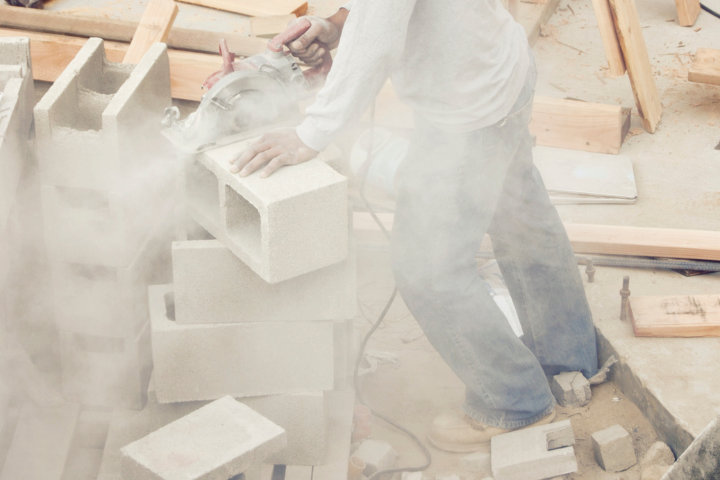
Crystalline Silica: Quartz, Cristobalite, Tridymite, and Tripoli
Quartz, cristobalite, and tridymite are three of the main polymorphs of crystalline silica. Additionally, there’s a derivative of quartz known as tripoli.
The latter is most notably used as a soft abrasive jewellery polish or even in toothpaste and industrial soaps.
How is it translated into everyday use? Crystalline silica shifts forms based on the conditions to which it is exposed. This refers to thermodynamic stability.
As such, quartz can change crystallographic density and properties when exposed to temperatures of 870°C. It then transforms into tridymite. If the thermodynamic stability continues to alter, the tridymite transforms into cristobalite at a temperature of 1,470°C.
Tridymite and cristobalite are rare finds in their natural state. Therefore, they’re predominantly produced through heating crystalline silica extracted in a quartz form.
Is amorphous silica a less hazardous alternative?
Yes, amorphous silica isn’t as hazardous, but you still have to be wary of said particles. Here are a few facts to gain further insight.
To explain it simply, the amorphous form of silica is an industrial version of the crystalline form, which is naturally occurring.
Why? Because aside from diatomaceous earth, which has a natural organic origin and exhibits cristobalite polymorphism, the rest of amorphous silica is purely industrial. Mainly, you will find the following synthetic forms of silica:
Precipitated silica
Colloidal silica
Silica gel
Fumed silica
Molten silica
To the above-mentioned, there’s another form known as silica fume, which is a by-product of metallurgy.
It’s important to mention that most scientific studies on the matter are focused on silica exposure in its quartz form since it’s the most commonly found crystalline silica. It’s followed by cristobalite, then in a limited matter, tridymite.
In terms of amorphous silicas, studies are even more fragmented. There doesn’t appear to be a scientific consensus on the matter. However, the Comité médical provincial en santé au travail du Québec (Quebec’s provincial medical committee on occupational health) states, on the last page of their Guide de surveillance médical des travailleurs exposés à la silice (Guide for medical surveillance of silica-exposed workers), that “Exposure to amorphous silica in humans is not associated with the development of pneumoconioses and does not progress into health conditions that are likely to be detected.” (Translated from the French)
Nonetheless, the same committee takes on a more restrained stance, indicating that exposure to amorphous silica can lead to:
skin, eyes, and respiratory tract irritation; and
severely aggravate existing respiratory diseases.
As for silica fume (non-synthetic silica, a by-product of metallurgy), the latter can cause issues similar to metal-fume fever, another acute occupational disease.
The reason why amorphous silicas aren’t as hazardous as crystalline silicas is because they don’t accumulate in the lungs. How? Because of their solubility. Amorphous silicas present the unique aspect of mixing with lung fluids and are then evacuated. Same occurrence if ingested. Amorphous silicas are eliminated rather quickly.
Prevention: A Crucial Factor in Occupational Health
Risk prevention is the only way to protect construction industry workers against the dangers of crystalline silica. To address this significant hurdle, the CNESST is made available to help you respect the best practices established in the industry.
As of April 28, 2024, Canada will be joining a long list of countries that are already limiting worker exposure levels to 0.05 mg/m³. Implementing this simple change will limit the number of silica-related medical cases.
To prevent fatalities, both employers and employees must abide by the laws and regulations implemented for work that’s likely to result in crystalline silica dust emissions, but more importantly, apply preventative measures.
Get new contracts for your construction or renovation company
RenoQuotes.com can help you get new contracts. We get new project proposals from clients seeking top-rated and trustworthy renovation professionals like yourself. To get started, simply fill in the form on our homepage (it only takes a few minutes) and receive information regarding potential clients by way of our services.
Dial 1-844 828-1588 to speak with one of our customer service representatives.
Last modified 2024-02-14
Looking for something else?
Related articles
The latest industry news, interviews, technologies, and resources.

Léa Plourde-Archer • 07 Nov 2023
As a renovation contractor, are you already thinking about the impressive amount of jobs that you will be working on in the peak season? Although this busy workload always represents good news, it can be hard to coordinate!

RenoQuotes.com • 01 Feb 2024
There’s a plethora of marketing tools available, and, as a novice, you can easily get confused or spend your entire budget on them. With management tools, competitive analysis tools, and other keyword tools, it can be hard to know where to focus.

Léa Plourde-Archer • 07 Nov 2023
The exterior sections of a house and the driveway are some of the first things that we see when arriving home. They are also some of the areas on the property that experience the most wear and tear as they are exposed to bad weather. There are several renovation, transformation and refurbishment projects that can contribute to embellishing the yard and exterior parts of a building, making it more welcoming.
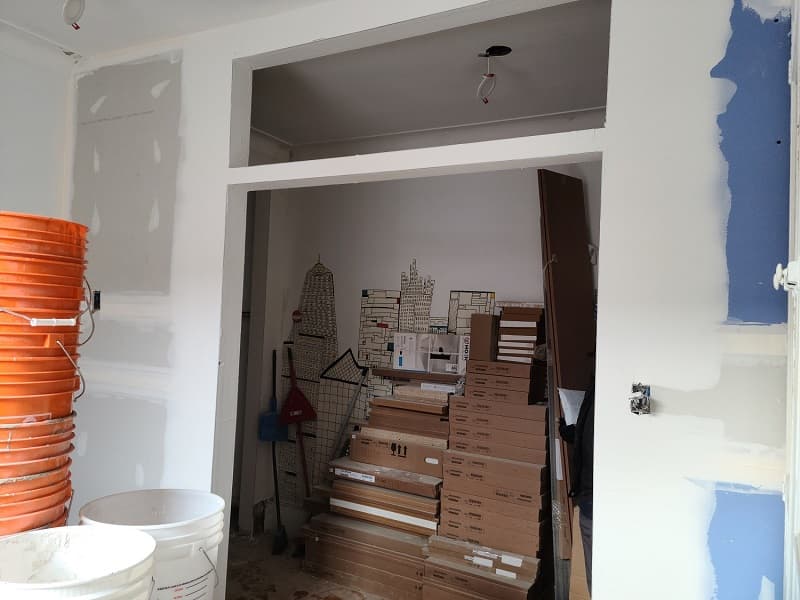
N/A • 07 Nov 2023
In the previous column, I talked about the first weeks of the project since the contractor has started working on our place. Things have quickly transformed in the home, from demolition to renovating plumbing and electricity, to building a new and larger bathroom.

N/A • 07 Nov 2023
Arriving home at the end of a long day of work will have any homeowner looking for ways to make their life easier. An electric garage door is one of the ways that can simplify life, allowing your car to glide into the garage with the touch of a button. However, as with any form of technology, there is plenty to consider before going forward with this purchase.